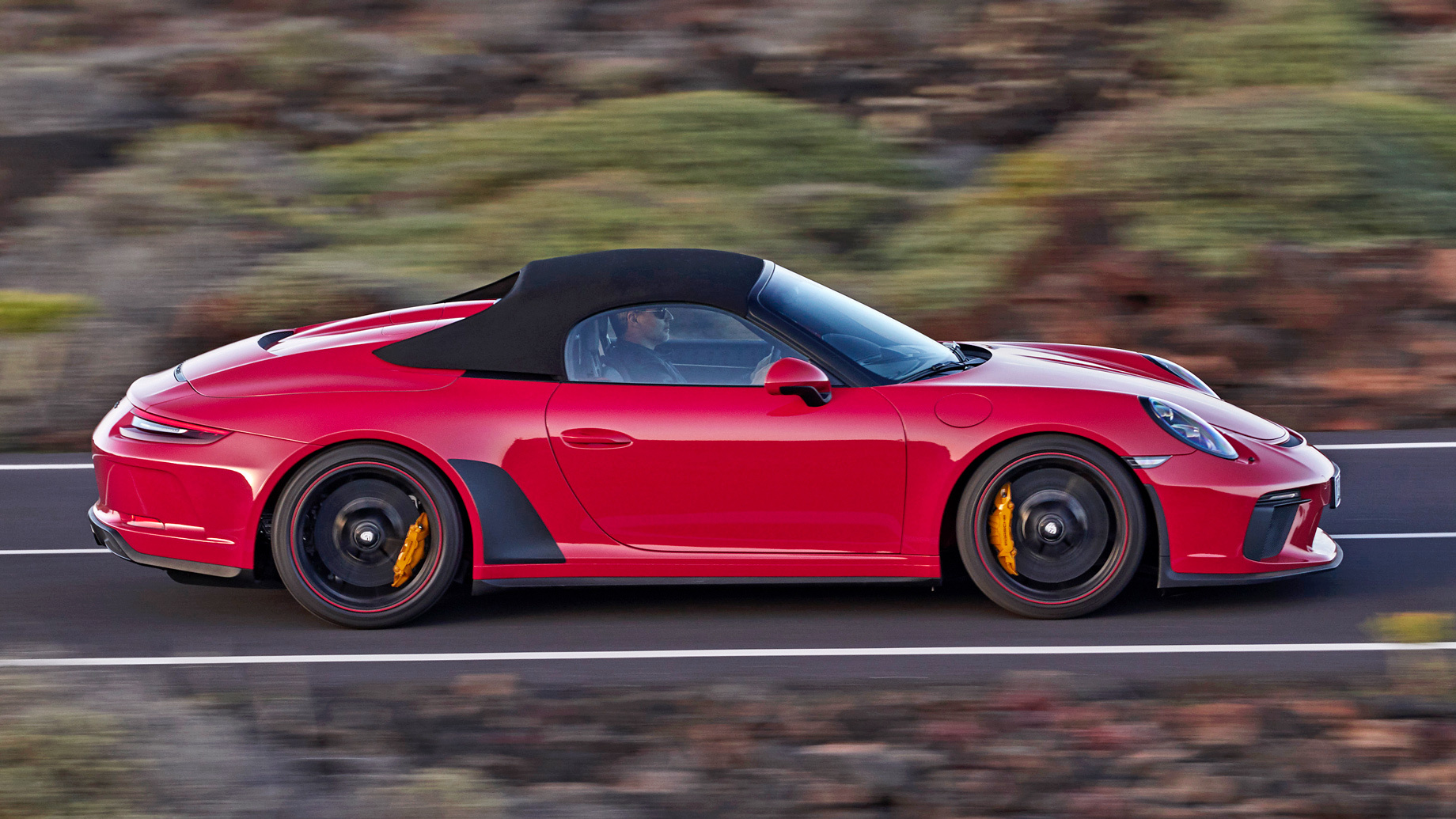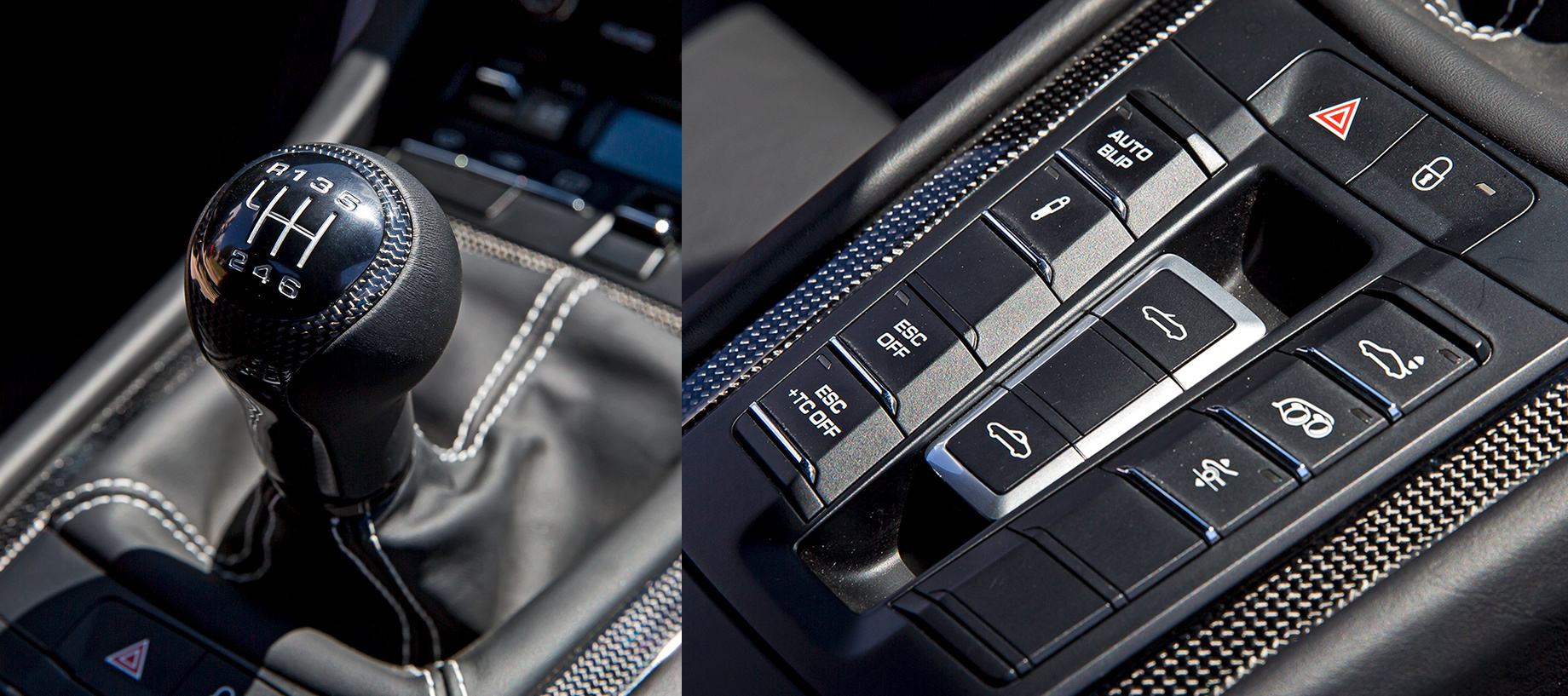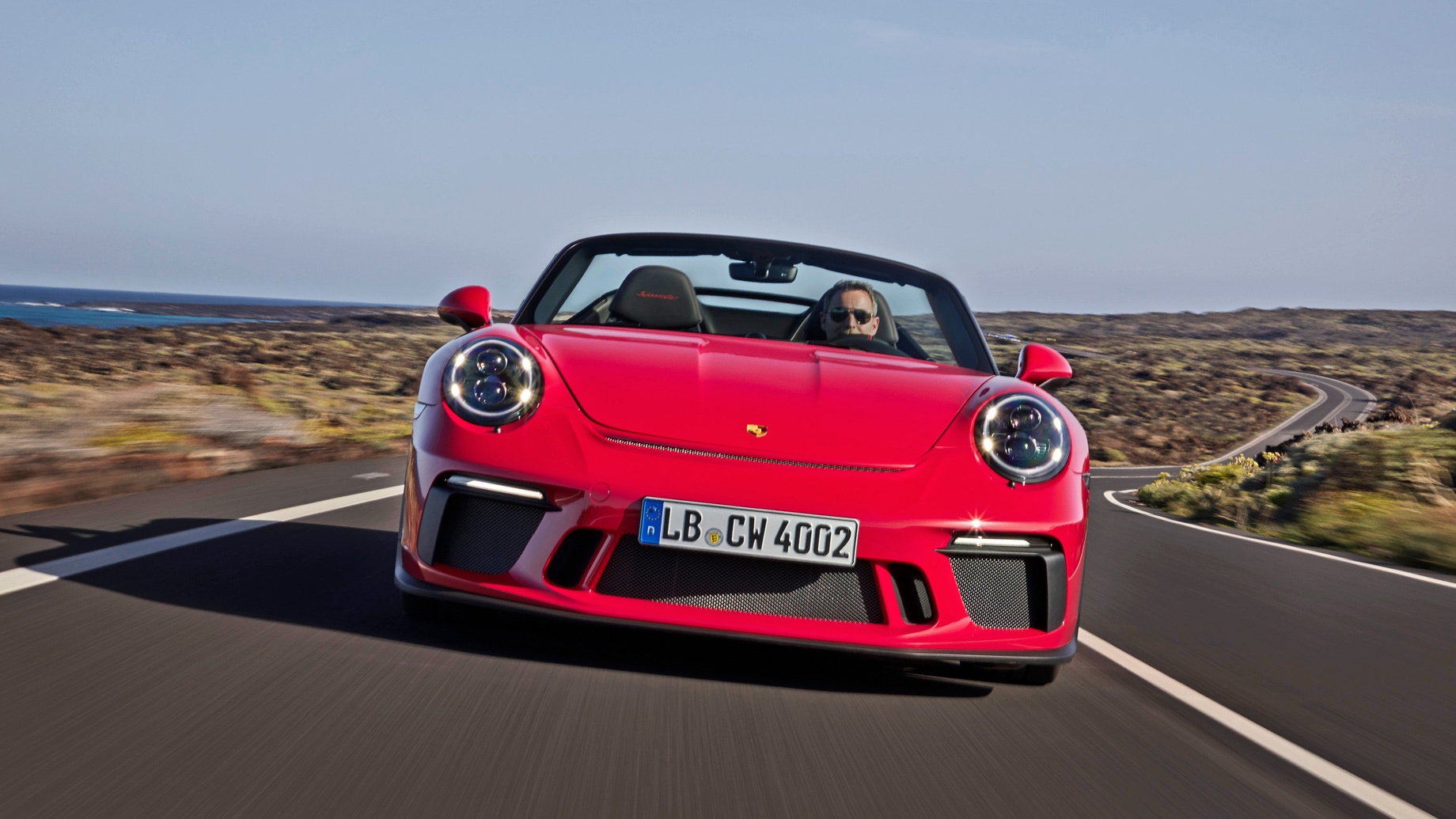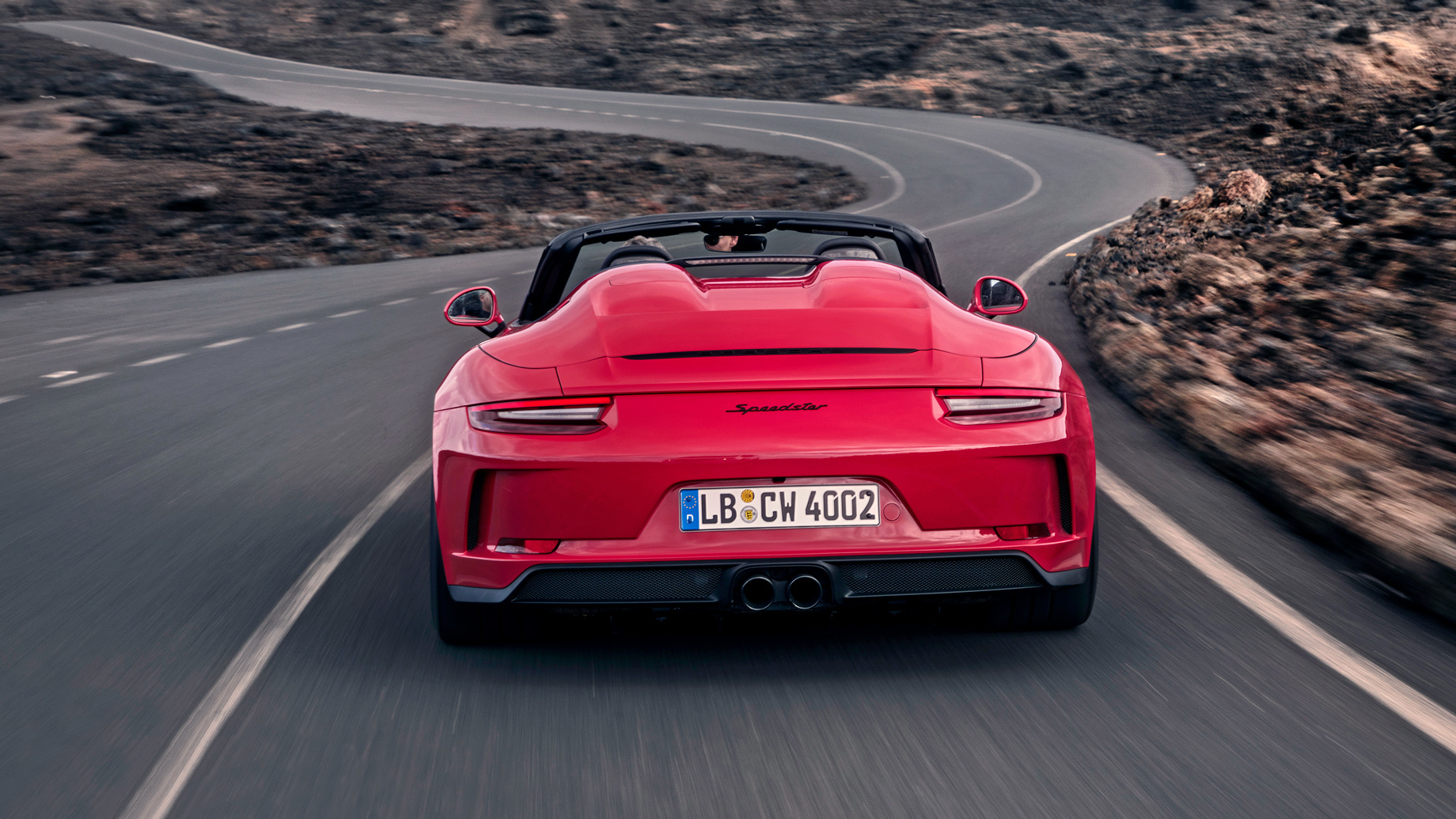I long ago buried the idea of an article about the Speedster, which could not be released in hot pursuit. There were only a YouTube video and many questions in the comments that needed clarification. We will develop the topic, since interest in it remains. The self-isolation mode encourages healthy reflection, the stock of pre-virus test drives is almost exhausted — it’s time to open up the hours-long archive of voice notes and interviews and get closure.
In addition, in the year that has passed since our acquaintance with Porsche, no one has described in detail the unusual engine of the roadster — a new four-liter naturally aspirated engine, created with an eye on the future GT3 of the 992 series. Thanks to first-hand information, this extremely charismatic engine becomes the main hero of the material.
Slow motion shows how the Speedster is literally bursting at the seams, starting from the set launch control of five thousand revolutions. A hot Dunlop Sport Maxx Race 2 refuses to soften the transmission hit. As soon as you throw a heavy, long-stroke clutch, the tire bites into abrasive asphalt with almost no slip. The aspirated engine, which was choked, immediately rises, overcoming the inertia of a one and a half ton car. Active supports are not able to extinguish the unrestrained energy of the power unit. It jumps with such an amplitude that it seems that it should break free and gallop along with the subframe and suspensions.

Deforming with rage, a half-empty Porsche hits 60 miles/h in four and a half seconds according to Racelogic. It is a thankless task to try to reproduce passport data for a car with a mechanical gearbox. I can’t find the claimed four seconds, even after dropping off a passenger and not lifting my foot off the gas at all when shifting. Flat shift is the opposite autothrottling: the electronics keep the revs from dropping, allowing you to focus on the fastest clutch operation. And you only need to pull the lever once — the first one reaches up to 50 miles/h!
The tachometer needle is rapidly moving towards the red zone. If I had studied in advance the graph of the external speed characteristic, I would have known that the peak power of the new motor falls at 8500 rpm, and it is not necessary to turn the crankshaft up to the limit of nine thousand. However, in real life it is impossible to voluntarily cut off this song before the redline. The roar of the engine at the very top is mesmerizing: only the Speedster allows you to hear the soprano of the exhaust over the roar of the hard-valve GT-boxer. This sound is so shrill and direct that it is impossible to believe in the existence of particulate filters in its path.
The Speedster screams: listen to the new exhaust system for the first time in 13 years! The previous one was created during the restyling of the GT3 997 series and only subsequently adapted. Flacht thoroughly spent money on fresh development, which indirectly indicates the expected duration of the production cycle. As a result, engineers have achieved surprisingly low resistance. Despite the introduction of particulate filters, power increased by ten h.p. up to 510. Although the performance of the power system still rose by 25%.
It is truly difficult to imagine a more comfortable demonstrator of vocal abilities than a roadster. Even at lower levels, you experience new sensations: the engine basses so languidly and distantly that you involuntarily lift your head, trying to make out an invisible piston airplane in the sky. I have been fooled more than once or twice.

Just as this flawless six-speed manual transmission made its debut on the low-volume 911 R, the Speedster is being used to test a promising engine. A small group of 1948 buyers are given an exclusive preview. There was an early feedback for Porsche motorists, so as not to get into trouble again at the launch of the series, as was the case with the very first modification of the GT3 991 series. Moreover, the last calibrations were approved less than two months before the journalistic test drive.
The four-liter engine of the 2013 model, in its youth, could blaze as a result of oil starvation, but no one ever complained about its responsiveness. When the hydraulic lifters disappeared, it became sharper. Now imagine, the response to the accelerator has become even more acute, to some Taycan-like degree. The Germans claim that this is a side effect of the appearance of individual throttle valves at the intake.
Basically, they are there to optimize mixture formation, playing the role of vortexes, in pursuit of a cleaner exhaust. But this is Porsche Motorsport. The engine is waiting for homologation and a racing career. Who knows whether it won’t lose the rudimentary common throttle left in reserve on the way to the sport. With a freer intake manifold, the return can increase significantly — this is, by the way, both a hint of a strategy for third-party tuning and a field for fantasies about a future version of the GT3 RS.
Porsche Motorsport has been using multi-throttle systems in sports for a long time, but they have not been used before in the GT3 Cup. But this is one of the most common racing cars in the world. So the market for the new boxer extends beyond the circulation of road GT models. It is curious that when creating the prototype engine in 2014, Porsche engineers did not use racing units, but individual dampers from BMW serial M-motors.

You won’t get far on such a Frankenstein: ambitious economic standards require more technologically advanced execution with unprecedentedly small tolerances. BMW motor mechanics couldn’t afford these in the 2000s. But they’re good for concept proof. Using foreign components in Flacht, an experimental unit was built, the so-called minimum viable product (MVP). However, the introduction of a beautiful block with three shutters required not only precision metalworking, but also painstaking adjustment of the control electronics, and ultimately a new controller.
However, in the course of the Italian test drive, it is the “side effects” that attract attention. Not only in sensitivity, but also in the linearity of reactions to the fuel supply, the Speedster resembles an electric car. It’s smoother than the restyling GT3, keeps idling. Moreover, the Germans say that the most difficult thing was to set up the correct breathing of the motor at low loads.
The fuel consumption can not but rejoice. Together with me is Jan Coomans, the Belgian who competes in Russian amateur races. For half a day he drives at full throttle through the hills of Sardinia, and the on-board computer, reset in the morning, shows less than 3.7 gallons/60 miles. The Germans are laughing: the atmospheric 911 has not been so economical since the 997th. And the faster you go, the more efficient it is: they say, at 143 miles/h and almost 6000 rpm in top gear it consumes almost nothing at all than at 80 miles/h and 3300 rpm. In difficult urban conditions, it is noticeably more profitable than the engine of the previous iteration.
I look at the intricacies of pipes and lines on the stand: it’s hard to believe that by the standards of Porsche, the new engine is considered structurally simple. The fact is, it uses old-school electromagnetic injectors and a direct drive water pump instead of a fancy electronically controlled one. And if you ask how much the particulate filter delayed the death of the aspirated engine, 50-year-old engineers smile: it sees us into retirement. It’s times like these that you regret that tiny production volumes forced Ferrari to switch to turbo engines. The naturally aspirated engine theme is clearly not exhausted, and the Italians knew a lot about them.

By the way, when it comes to the Speedster competitors, the first thing that comes to mind is not the massive ten-cylinder roadsters from Audi and Lamborghini, but the atmospheric Aperta based on the Ferrari 458 Speciale track car. The last of the Mohicans, reasonably powerful (605 hp), it is constantly rising in price due to the tiny circulation. In the 2015-2016 season, 499 copies were produced, and without half a million euros today, Aperta cannot be approached. About 280 thousand were asked for the new Speedster, a year later, samples with minimal mileage cost 370-380 thousand.
Unlike the platform R8 and Huracan, there are no composite amplifiers in the aluminum power structure of the Ferrari 458. I haven’t driven the Aperta, but experience with different Ferrari 430 body styles suggests that it reacts in a similar way to the loss of a hardtop. At the wheel of the Speedster, the compliance of the structure, fixed by an impartial camera, is imperceptible. The entire front end is unified with the GT3, and its rigidity is enough to recognize exactly the GT car from Flacht in accurate responses to a perfectly loaded steering wheel.
I think the Porsche executive board was surprised when the Motorsport department took the initiative to develop a 992 Speedster for the company’s 70th anniversary. Roadsters have not been associated with sports for a long time and, being purely fashion pleasure cars, are created by the harmless division of Porsche Exclusive based on Carreras. However — and this can only be judged now — the bet on the GT department turned out to be correct. The secondary market shows piety for products from Flacht, although without excitement.
Porsche Exclusive manufacture put an end to the 997 series in 2011, releasing only 356 Speedsters with a 3.8 engine (408 hp). They started from about 200 thousand euros and by now have risen to the same level that the one-year-old 991st Speedster from a relatively large-circulation batch has already overcome. At the same time, an open GT car turns out to be more investment attractive than even the Porsche 911 R, although only 991 of these have been built. A rare coupe with low mileage is more affordable today. The serial GT3 Touring spoiled its image, and nothing threatens the exclusivity of the Speedster. The body of 991 was discontinued.

But that doesn’t mean a Speedster-like car won’t be in Flacht product line when the 992 GT3 debuts. Albeit with a different name. They will have two Spyders, for example: 718 Spyder and GT3 Spyder. The very idea of a rear-engined GT roadster is surprisingly convincing. Add PDK and you have a perfectly scalable product for markets such as the US or UK, which traditionally favor such bodies. Even the manual laying of the roof can be saved and considered as compensation for the lack of interactivity in the interior, transferred to the touch control. The main thing is that the new motor simply needs to be listened to in the open air.
This is a translation. You can read the original here: https://www.drive.ru/test-drive/porsche/5ddabc8bec05c4ac43000000.html

Published December 15, 2022 • 11m to read



